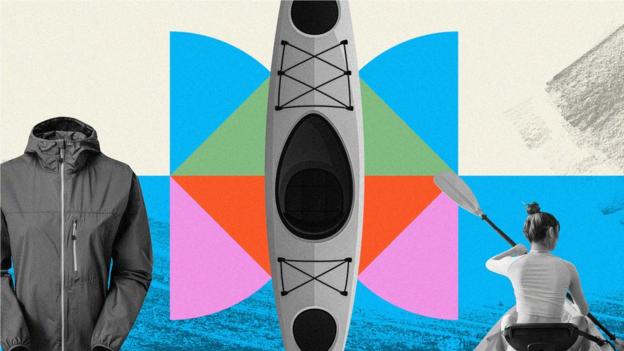BBC Elite British Sportswomen's Study 2024: The challenge of finding kit for women
Last updated on .From the section Sport

When it comes to making kit for female athletes, there seems to be a common theme - it is often forgotten that women have hips.
More than two thirds of 143 elite British sportswomen who responded to a BBC Sport questionnaire said the majority of the equipment they used was not specifically designed for a woman.
Just under a quarter said they thought the quality of facilities or equipment they use could cause them injury.
One issue highlighted was women's kit simply being a smaller version of men's, which does not take into account the differences in women's bodies. Another was the design of some clothes sticking to feminine stereotypes, which inhibited their use in sport.
This is not a new issue. A survey in June 2023 of female footballers at top European clubs found more than 80% suffered regular discomfort because of their boots. The research found boots on the market are largely designed for white males, with a higher number of black players reporting heel discomfort than white players.
Sports scientists have previously highlighted the lack of football kit designed for women, saying using kit and balls created for male players could put them at higher risk of injury.
One athlete described using heavy equipment that is harder for a woman to use than a man and felt that an injury she had may have been aggravated because of that.
"They always develop the male sizes first. You just think, why?" she said.
"We're having to wait longer and we're more likely to get injured by using stuff that's too big for us."
Kitefoil racer Lily Young has experienced similar issues.
"We really struggle to find equipment, especially harnesses, that fit. They're just not designed for people who have hips," she says.
"They're super uncomfortable and cause loads of issues. Everything is not designed for women. It's so old fashioned."
One of the recent changes Young has seen is a simple yet effective one - a wetsuit that women can urinate out of. She says sailors in the boat classes can often be out on the water for "five or six hours", which makes finding somewhere to use the bathroom incredibly difficult.
"That was a couple of years ago and it was still average," Young says.
"In freeriding, the stuff for women has really taken off. But it's just always number two."
Even female-specific kit is not exempt. England netballer Eleanor Cardwell told the BBC in March 2023 about the pain an incorrectly-fitted sports bra caused her in her teenage years.
Given some research has shown puberty and the changes it brings can put young girls off continuing with sport beyond primary school, finding the right kit is crucial to helping keep girls active.
Para-snowboarder Nina Sparks feels that some snowsport jacket and trouser designs assume all women have the same body shape and will "not really actively [be] doing anything", with fashion perhaps taking precedence over functionality.
"It will be like glittery jackets with a big furry hood - just something really ridiculous like that, for it to be a women's jacket," she explains.
For Sparks, men's jackets do not fit the same - they do not account for a woman's breasts and hips, for example. But when she snowboards, she wears men's trousers, because equipment such as impact shorts and a back protector are too bulky to fit under women's clothing.
"This year we've just got our team jackets and they sent a women's one. It actually fits so well, so I'm really happy," she says.
"It's a small win. It fitted me better than the equivalent size men's one did. That was fantastic."
A committee of MPs recently issued a report calling for better female-specific clothing, footwear and equipment following the high number of anterior cruciate ligament injuries suffered by female footballers.
The report also said the issue of sportswear and equipment being unsuitable for women is "indicative of systemic gender inequality in sports and exercise research, which is still overwhelmingly conducted by men, looking at issues affecting men".
There is change in some areas - but many athletes feel there is much more to be done.



















